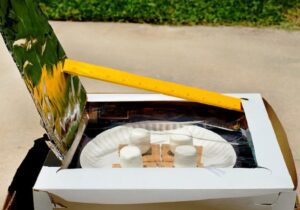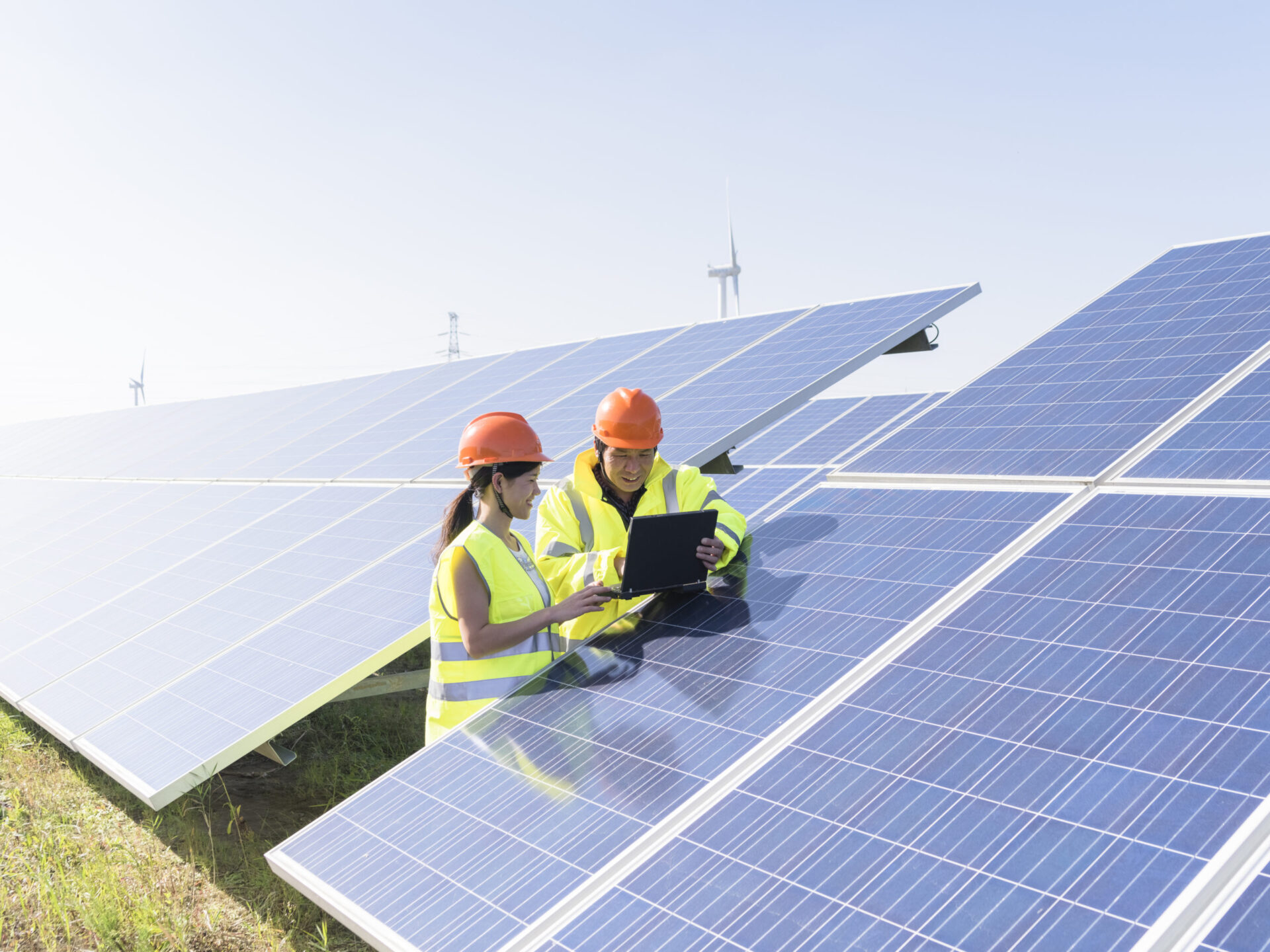Solar Oven S’mores
About the Activity
Learn about solar energy while cooking s’mores in a cardboard box!
The sun warms the earth, creates weather patterns, and helps plants grow. So it’s pretty important! But did you know that humans can actually use the sun’s power as a tool? It’s true. In this tasty activity, kids will learn how engineers harness the sun’s energy for other purposes by building a tin foil-lined cardboard box that uses the sun’s rays to cook delicious s’mores!
This activity requires access to an outdoor space. For optimal results, try doing it when the sun is most intense and highest in the sky – the higher the angle of the sun, the more direct light you’ll get, and the faster you get your s’mores!

Materials
Small cardboard box with a lid, such as a pizza box
Tinfoil
Graham crackers
Marshmallows
Chocolate
Plastic wrap
Sunlight
Pencil/stick or wood skewer
A very hot day
Activity Steps
Before you start the activity, think about the amazing ways the sun powers our lives. Of course, it’s energy is what allows there to be life on earth in the first place. But did you know that humans started using the sun to cook food way back in the 7th century?
Scientists really started putting the sun to work in 1954, when solar cells – which you can think of as little batteries that store the sun’s energy – were invented. Today, solar panels and cells are used to put energy in our electrical grid and to directly power machines like airplanes and even homes. Now let’s get started!

Take an empty pizza box and cover the base and lid with tin foil all the way around – depending on your pizza box and your foil, you may need tape to securely fasten the foil. Be careful to make as few wrinkles as possible. This will reflect the solar radiation into the box so the more concentrated the light, the better.
 Did you know?
Did you know?Aluminum is just one of several types of conductive materials. Other common ones include copper, steel, and nickel. It’s also very malleable, which means you can bend it into many different shapes.
Next, place the box outside. Ideally, try to place the box on a concrete surface like your driveway or sidewalk.
Orient the solar cooker directly towards the sun so that there’s no shadow inside the cooker. The shadow of the cooker should be directly behind its back.
Cover the opening of the box with plastic wrap; this will help trap the heat as the inside of the box heats up. Make sure that it is completely sealed.
Now, use a pencil, stick or skewer to adjust with the position of the pizza box lid. You want to use the lid to reflect more sun rays directly into the pizza box. Take a look at the diagram next to these instructions to help determine the best position for the lid.
How Does It Work? The aluminum foil on the box lid concentrates the sun’s rays and reflects them into your cooker.
Now, use a pencil, stick or skewer to adjust with the position of the pizza box lid. You want to use the lid to reflect more sun rays directly into the pizza box. Take a look at the diagram next to these instructions to help determine the best position for the lid.
How Does It Work?
The aluminum foil on the box lid concentrates the sun’s rays and reflects them into your cooker.
Allow the box to “pre-heat” in this position for 30 minutes.
Once the box is finished preheating, place your graham crackers, with marshmallows on top, inside the box and reposition the lid to catch those sun rays. (Don’t add the chocolate just yet!)
How Does It Work? Your cooker is heating up because of the interaction between the heat produced by sunlight and the aluminum foil. When the sunlight hits the aluminum, some of the energy is converted from light energy to heat energy. Because aluminum foil is a metal, it conducts heat easily and your food begins cooking. Your cooker is able to retain the energy created through this process because the plastic wrap is covering the main body of the cooker, keeping the heat inside.
Let the marshmallow cook for approximately 30 minutes.
Once the marshmallows are soft, place the chocolate on top and reposition the lid for 5 more minutes.
Finally, carefully remove the s’mores from the box, place another graham cracker piece on top of each one, and then enjoy your solar-powered s’mores!
Test Your Knowledge
Reflection Questions
Questions for your kids and teens.
How do you think tin foil helps cook the s’mores?
Why does the entire box need to be covered in tin foil?
Why do you think it takes so long to cook them in the sun vs. at a campfire?
Why should you place the box on a concrete surface instead of grass?
How does preheating the box help the s’mores cook?
What are some ways you could make the s’mores heat up faster?
Investigate and Explore
Take what you’ve learned to the next level.
Using solar energy to make s’mores is one way to harness the sun’s power. But solar power can be used for much more. Today you learned how to use aluminum foil to create a small solar thermal energy system. But the sun can also interact with other materials to directly create electricity through solar photovoltaic cells – more simply called solar panels – and we can use the sun’s energy to power cars, heat swimming pools, and even provide electricity to our homes through solar panels on the roof.
If you enjoyed working with aluminum and using the sun’s power to make s’mores, then you might be interested in becoming a solar engineer. Solar engineers develop, test, and install solar panels and other solar-powered technologies. They often work in laboratories and outdoors at solar power plants. Solar engineers are highly trained in the field of solar energy, but many have backgrounds in mechanical and electrical engineering.
And as corporations and scientists increasingly look for more environmentally friendly energy sources to power the world’s industries, solar power will probably be a major part of our energy in the future!





